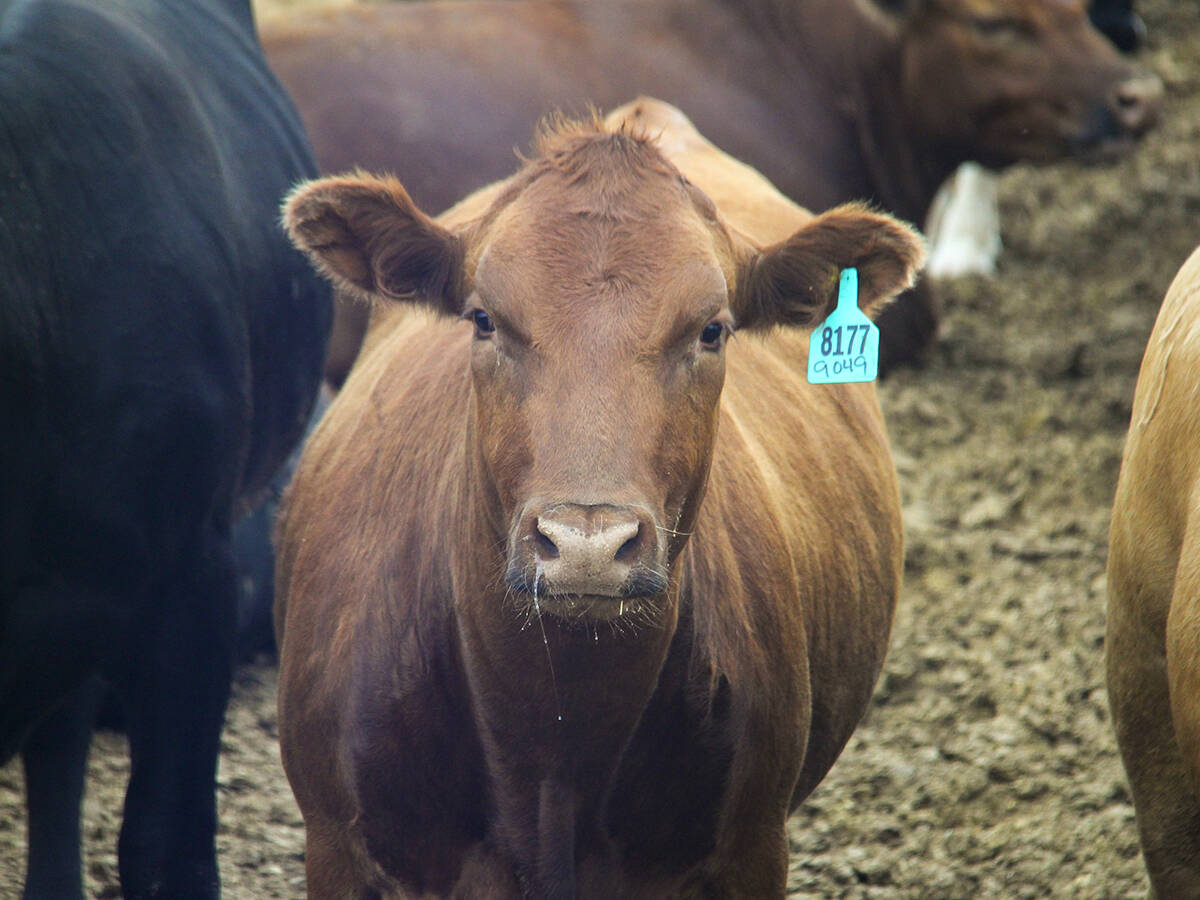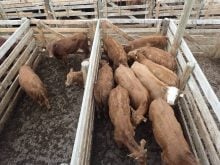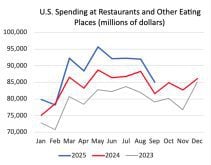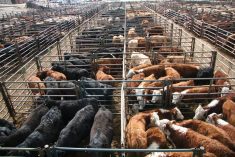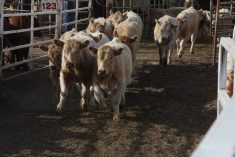For the week ending Nov. 1, western Canadian feeder cattle markets traded $15-$30 per hundredweight lower compared to seven days earlier.
Cash feeder markets were off by $30- $40 per cwt. early in the week but then marginally recovered on Wednesday as the feeder cattle futures market stabilized.
There were a few exceptions. Higher quality yearlings heavier than 800 pounds coming straight off grass were unchanged to $10 per cwt. lower on average. Calves lighter than 550 lb. were unchanged to $15 lower compared to the previous week.
Read Also
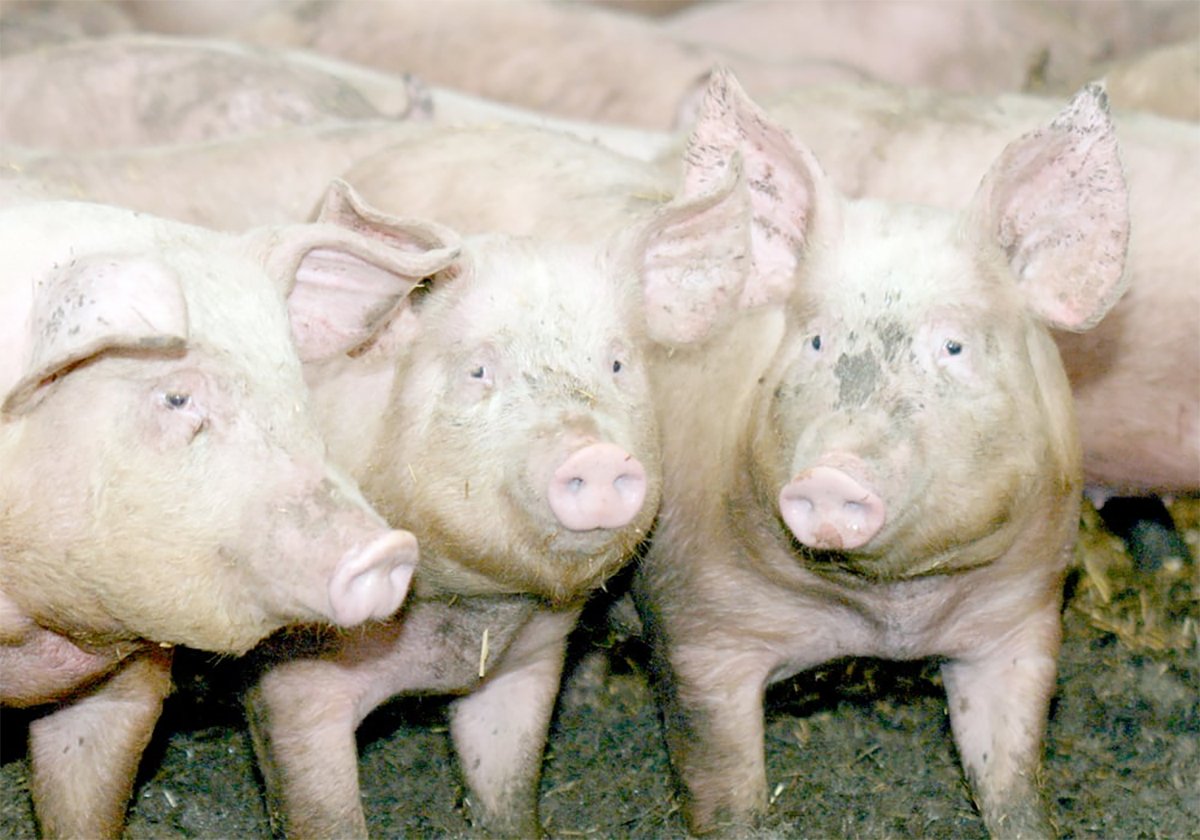
The Western Producer Livestock Report – November 13, 2025
Western Producer Livestock Report for November 13, 2025. See U.S. & Canadian hog prices, Canadian bison & lamb market data and sales insights.
The TEAM video market report had a package of 120 Simmental Angus cross heifers averaging 1,000 lb. straight off grass, with full processing records but no implants, valued at $425 per cwt. f.o.b. ranch near Elkhorn, Man. for delivery the week of Nov. 3-7.
A cattle producer north of Calgary reported that a larger package of 1,000 lb. black wide-frame Limousin-cross steers off grass with full processing data and implants traded for $458 per cwt. f.o.b. ranch deliverable Nov. 3-7.
In central Alberta, there were packages of quality steers in the weight range of 800-825 lb. that traded for $465-$485 per cwt. early in the week.
On Monday, at the Killarney sale, a group of 25 black steer calves averaging 836 lb. traded for $482 per cwt.
On Thursday, at the St Rose Auction Mart in Manitoba, a smaller package of Charolais-cross steers off grass averaging 870 lb. traded for $513 per cwt.
A rancher reported that a larger package of Simmental-based steer calves averaging 700 lb. coming off cows and forage with processing records sold for $548 at a ring sale north of Calgary.
Southeast of Saskatoon, a cattle buyer reported that a group of 50 black heifers straight off their mothers and pasture averaging 705 lb. were valued at $480 per cwt. f.o.b. ranch.
At the Vermillion, Alta., sale, a package of 48 tan steers with a mean weight of 607 lb. traded for $599 per cwt. At the same sale, a group of 25 Charolais heifers averaging 625 lb. sold for $547 per cwt.
The TEAM video market report had a group of 80 Angus-cross steers with a mean weight of 540 lb. with health records and no implants off cows and grass selling for $686 per cwt. f.o.b. ranch near Maple Creek, Sask., for immediate delivery.
At the Ponoka, Alta., ring sale, a group of 16 red mixed heifers weighing 538 lb. off cows, grass and hay with full processing data and no implants were last bid at $557 per cwt. There was also a group of tan steers straight off their mothers averaging 500 lb. that traded for $744 per cwt.
The Rimbey market report had a handful of May-June born black calves averaging 469 lb. coming off cows and pasture with health data priced at $741 per cwt.
The April live cattle futures were trading $25-$30 off the contract highs. If feedlot operators didn’t hedge up incoming feeder cattle earlier in October, the margins on current inventory is negative $350-$450 per head.
U.S. feeder cattle markets were down US$20-$30 per cwt. from seven days earlier.
There is a further downside risk in the feeder and fed cattle markets.
At this stage, the U.S. border is closed indefinitely to Mexican feeder cattle, but ideas are that trade will resume again in the first quarter of 2026.
As well, there are signs that the U.S. economy is slowing down and consumers are pulling in the reins on spending. Keep in mind that restaurant and grocery store spending is at seasonal lows during January and February.
When feedlot operators start experiencing negative margins, the feeder cattle market will adjust accordingly.


